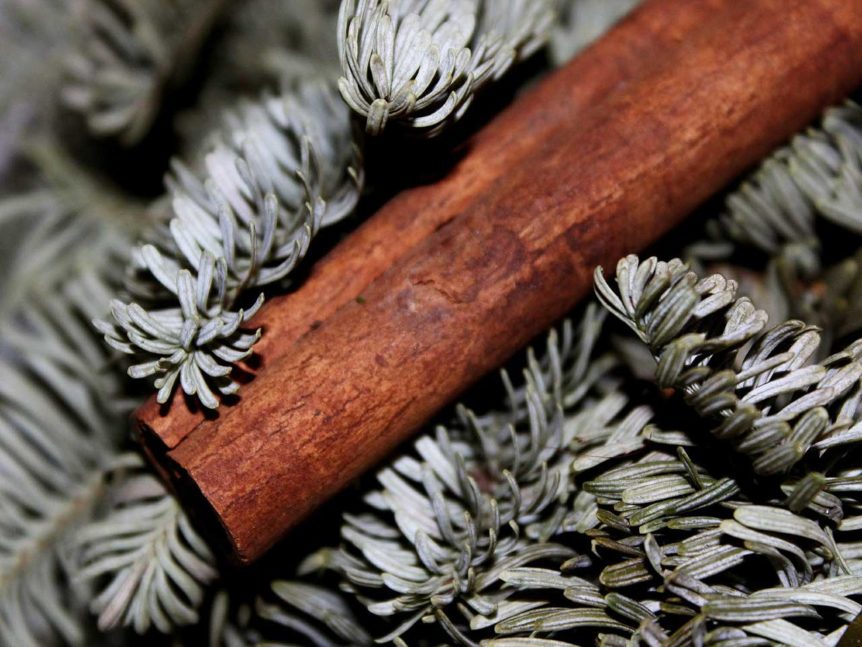It’s that time of year again when you walk into a department store and the lilting scent of cinnamon meets you. You can’t help but take a deep refreshing breathe and look around to see where it is originating from.
Cinnamon is available as a powder commonly used in baking and often mixed with sugar to spread over warm melting butter on top of a slice of bread just popped up out of the toaster. It is sprinkled over applesauce, added to a variety of pie fillings, cake batter, and cookie doughs. It can be added to a hot cup of coffee or hot chocolate to enhance their flavors and of course, can be added to all types of cinnamon candies. It also comes in a quill or rolled stick. With the holiday season approaching what is more inviting than a warm glass of wassail with an attractive cinnamon stick complimenting its flavor. A few drops of cinnamon oil placed in a diffuser is yet another way to enjoy the benefits of this amazing essential oil as it permeates a home or office.
Cinnamon has been a coveted item for thousands of years. Its use dates back as early as 2,000 B.C. with the early Egyptians. Legends of one sort or another spread throughout the Middle East and Europe keeping its origins a secret, turning it into a luxury item, and justifying its exorbitant prices. At one time it was affordable only to the upper class but over time its’ availability was sought after by the middle class too. During a time when refrigeration was nonexistent cinnamon was used as a preservative for meats during the winter months. Even Christopher Columbus sought for “cinnamon country” in the America’s hoping to win Queen Isabella’s approval and support for his explorations. Finally, after much searching, cinnamon trees were discovered growing in Ceylon, known today as Sri Lanka.
An interesting fact about cinnamon is that it actually comes from a small tropical evergreen tree that can grow as tall as 20 – 30 feet high. It is harvested from the inner bark of the tree. The cinnamon sticks you see in the stores that are curled so nicely is actually a natural phenomenon that occurs when the cinnamon is shaved from the bark. They can be left as quills or crushed into a powder.
The health benefits of cinnamon are many. Some people have experienced lower blood sugar levels, improved digestion, and higher levels of immunity to diseases. It is packed full of antioxidants and ranks higher than garlic and oregano as a “superfood”. Additional qualities include:
- Anti-inflammatory properties
- Promotes increases in HDL cholesterol (the “good” kind)
- Promotes heightened sensitivity to the bodies insulin hormone which regulates a person’s metabolism and use of energy.
- Studies are unfolding possible beneficial effect on neurodegenerative diseases such as Alzheimer’s and Parkinson’s disease.
- When a doctor tells you your ailment is a virus and there’s nothing they can do for you, try taking some cinnamon. Not only does Cinnamon supports healthy metabolic function, but it also helps maintain a healthy immune system.
So, the next time you sit down to dinner you may find yourself saying, “Please pass the cinnamon” instead of , “Please pass the salt”.

